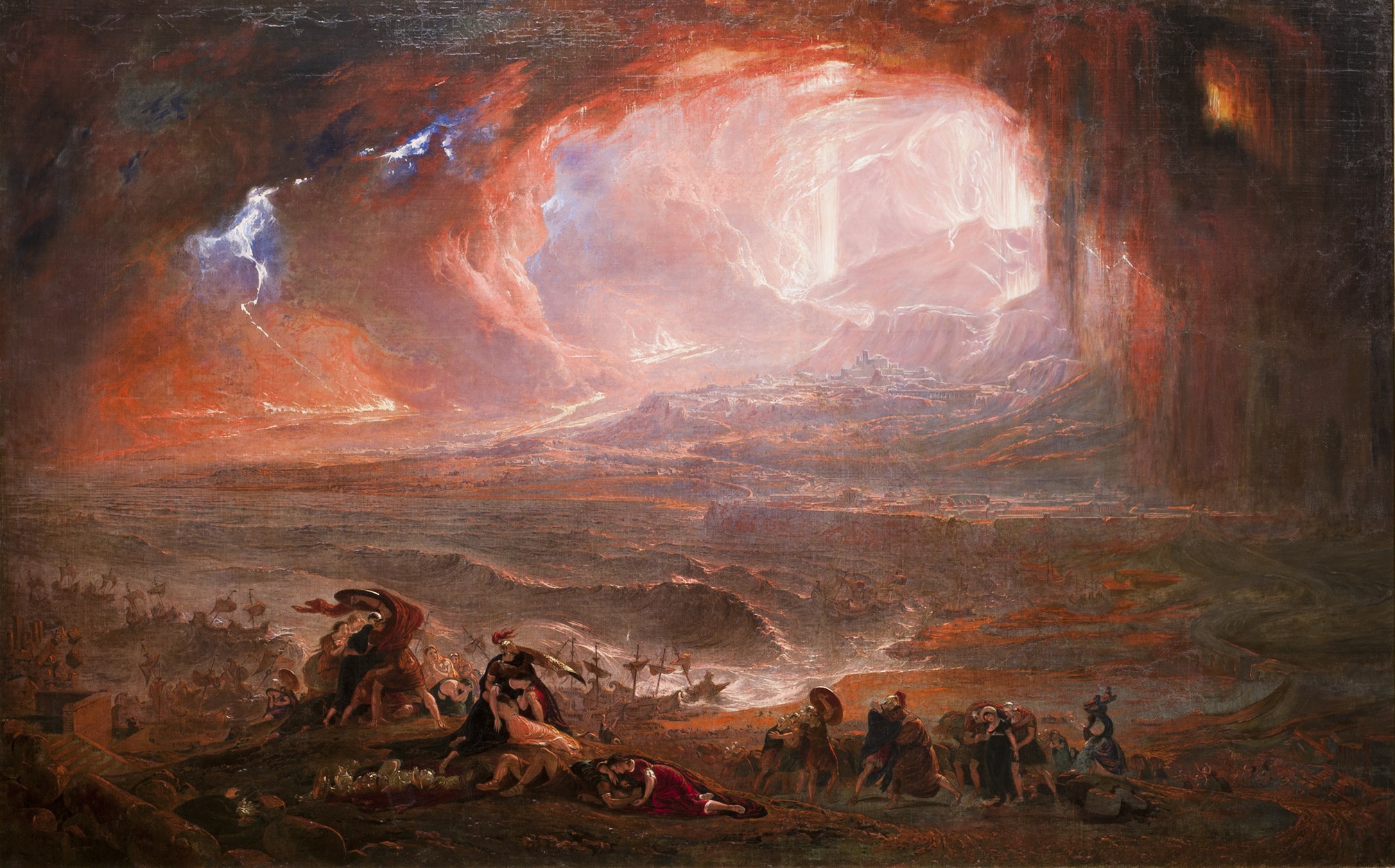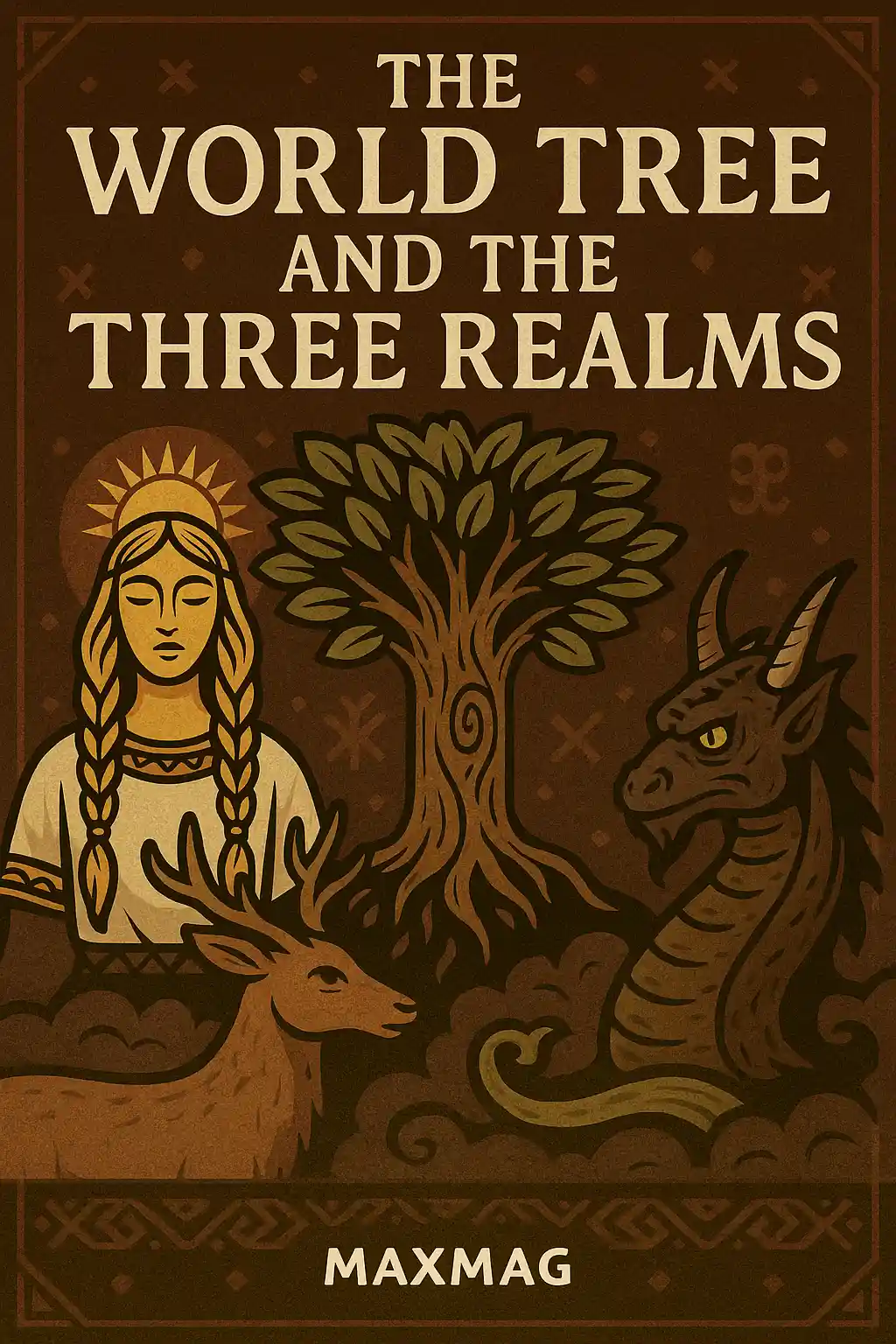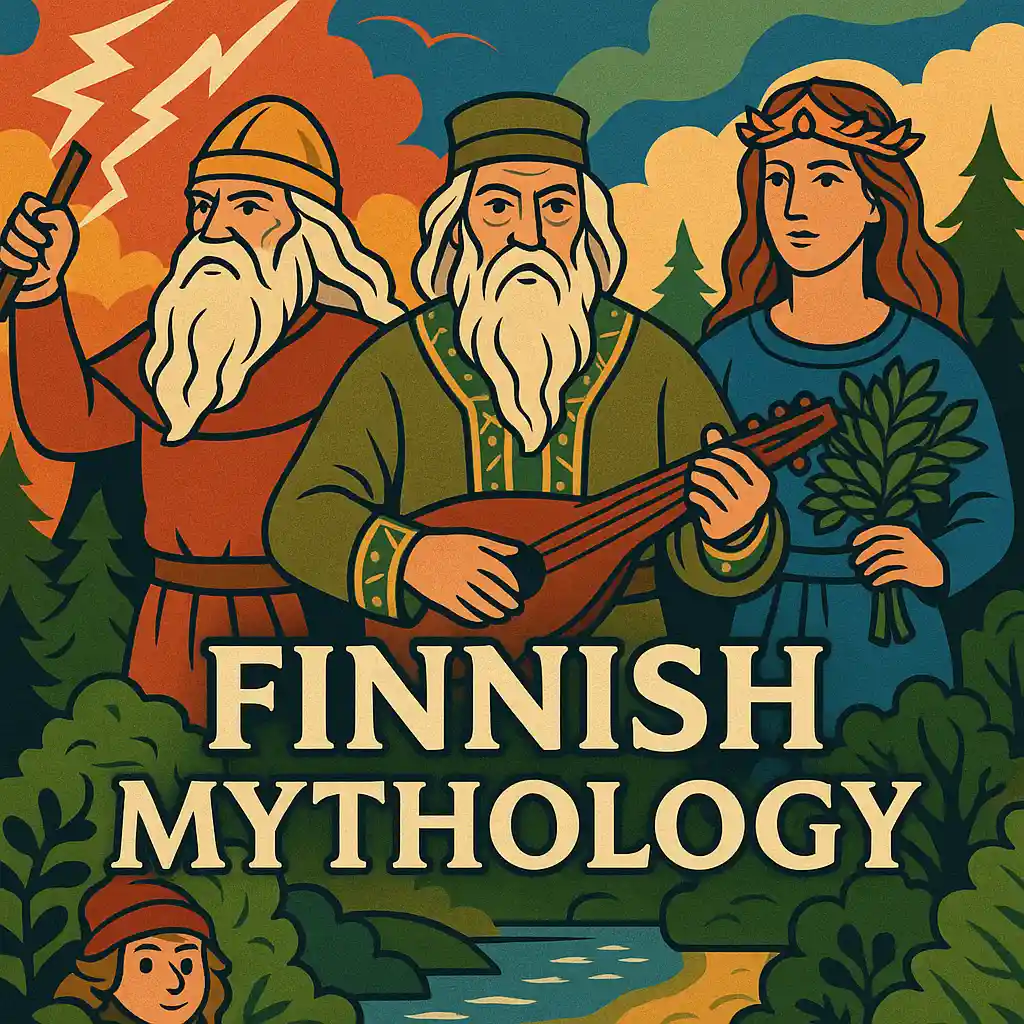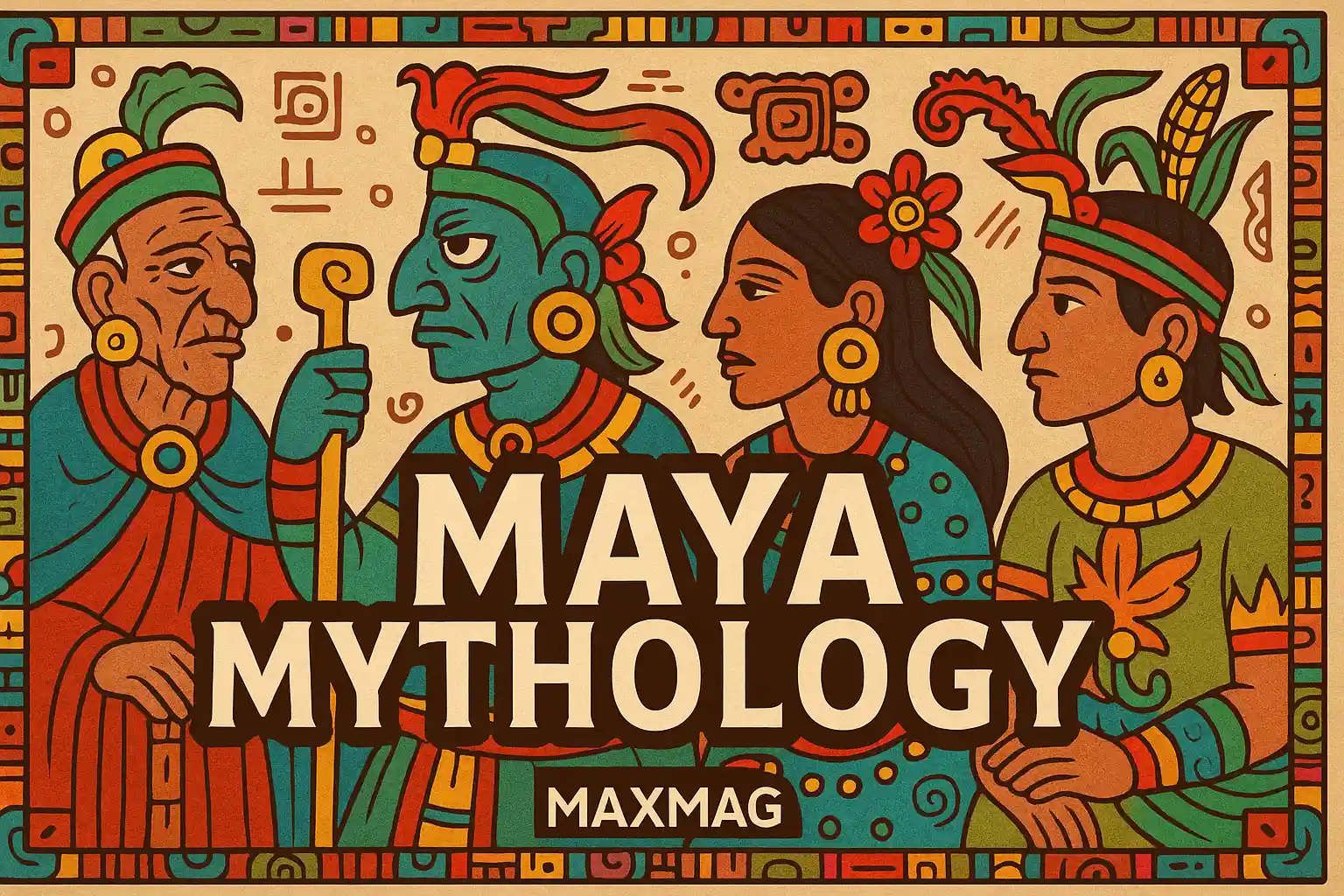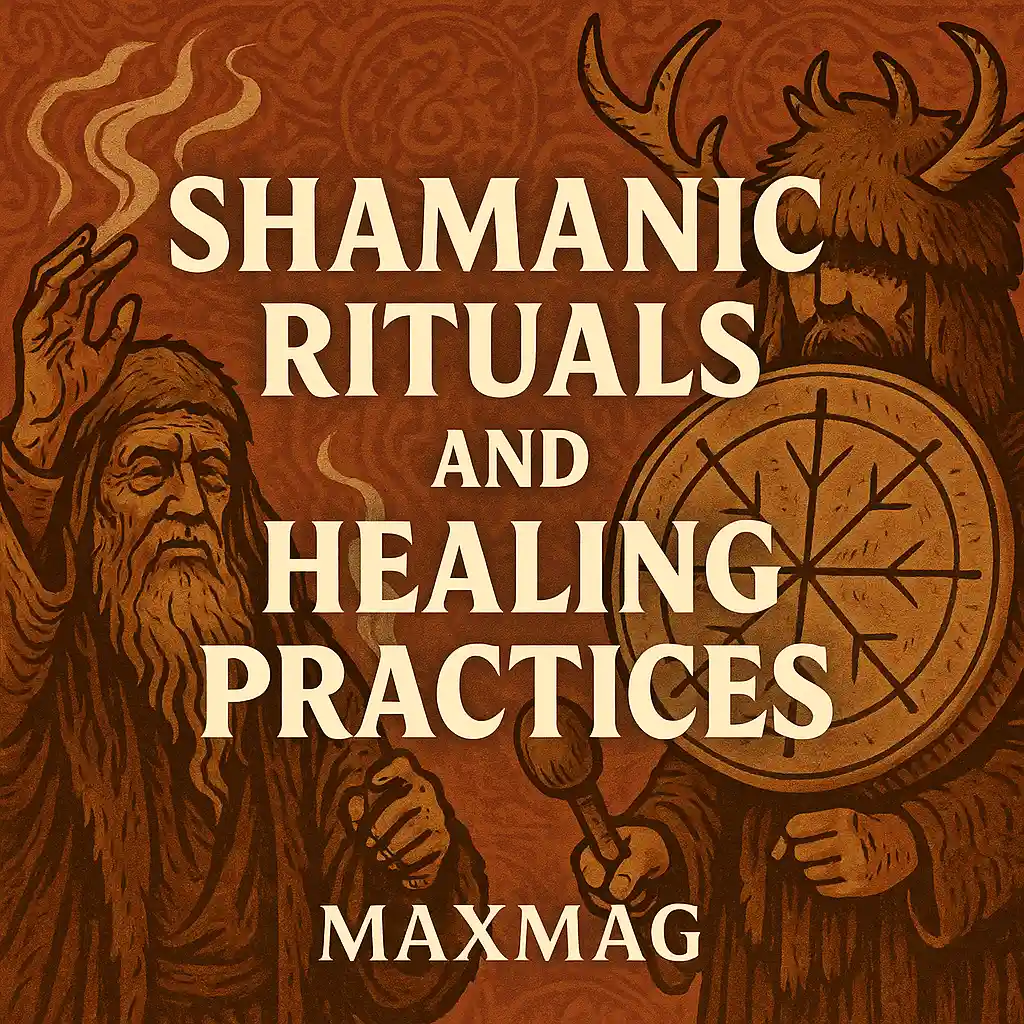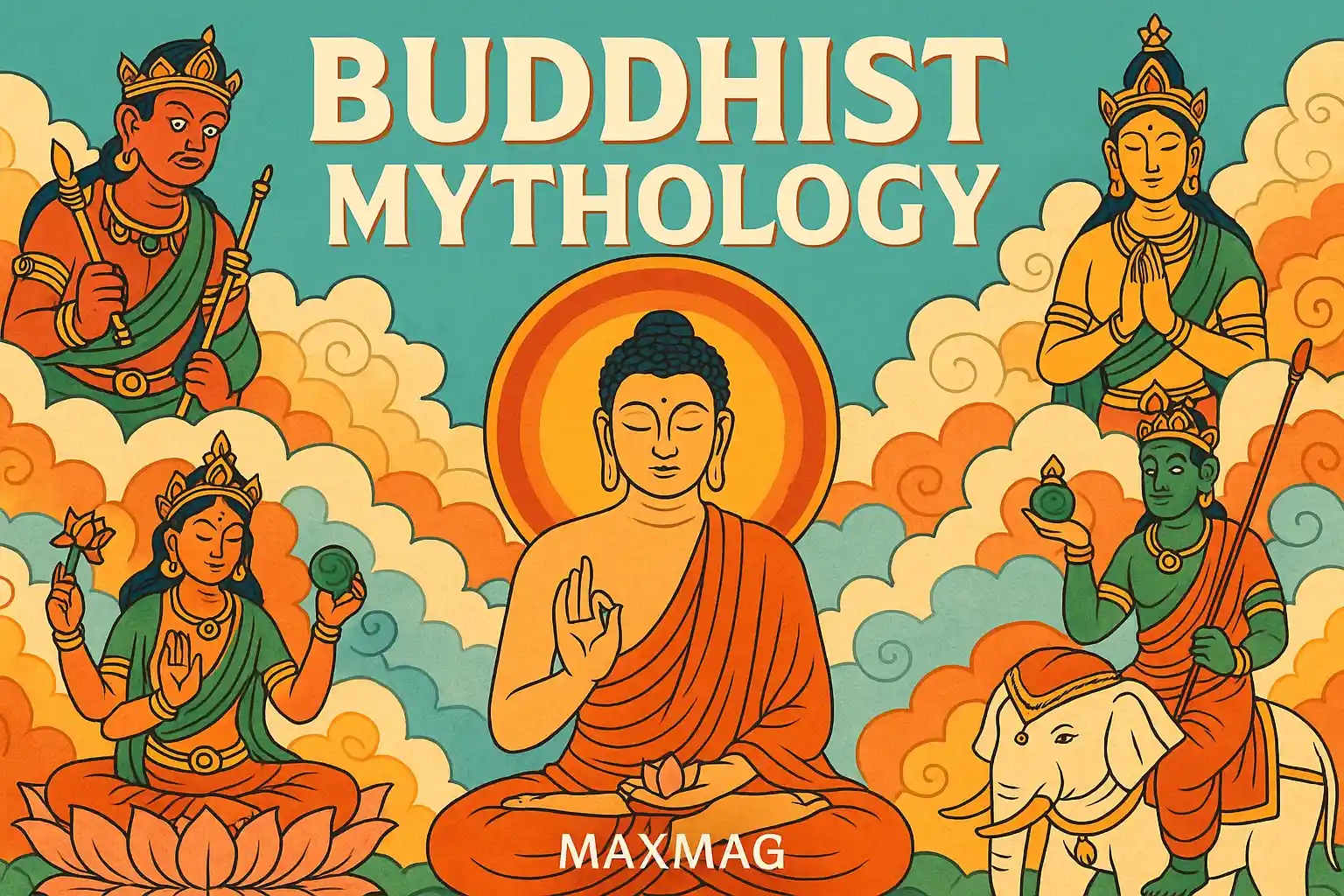
Turkic mythology, born of the vast and often harsh Central Asian steppes, reveals the deep connection between nomadic life, the heavens, and ancestral wisdom. Among the early Turkic tribes—such as the Gokturks, Uighurs, and Kipchaks—life was a continuous negotiation between the forces of nature and unseen spirits. From the sacred wind and sky to thunderous deities and forest guardians, mythology shaped every layer of existence. Not merely symbolic, these stories were practical, embedded in daily survival, seasonal movement, and the identity of entire clans.
The ancient belief system provided more than spiritual comfort—it offered guidance on leadership, moral order, and healing. By weaving together cosmology, ritual, and oral tradition, Turkic mythology became a complete worldview. And though empires rose and fell, its stories endured, preserved in epic poems, revived in cultural movements, and echoed in the flags, festivals, and folktales of modern Turkic nations.
What is Turkic Mythology?
Turkic mythology is the collection of myths, deities, cosmological ideas, and spiritual customs passed down through generations by Turkic-speaking peoples. Spanning modern regions like Kazakhstan, Kyrgyzstan, Uzbekistan, and parts of Siberia and China, these groups developed a mythology rooted in Tengriism, the indigenous religion that venerates the sky god Tengri, mother earth Umai, and a host of spirits tied to nature, animals, and ancestors.
Unlike mythology systems with elaborate pantheons of gods behaving like humans, Turkic mythology focuses on elemental forces and harmony with the natural world. Water, fire, wind, and stars all had spiritual significance. Rivers were living entities; mountains were sacred sites; animals were clan totems. Through animistic beliefs and shamanic practices, the myths fostered a spiritual ecology where every action—hunting, marriage, or war—required ritual alignment with spiritual forces. This concept still echoes in modern eco-spirituality and revivalist groups working to reestablish cultural identity through traditional beliefs.
Tengri: The Sky Father Who Watches All
In Turkic cosmology, Tengri is the supreme being—the endless sky who sees all, knows all, and determines the fate of men and empires. Known as “Kök Tengri” (Blue Sky), Tengri is not a personified god but a divine cosmic presence. His domain is the ever-expanding heavens, and his authority extends over rulers, warriors, and the rhythms of the natural world. Thunder, wind, and celestial alignment were all believed to be manifestations of Tengri’s will.
Early Turkic inscriptions, such as those found in the Orkhon Valley, emphasize that a ruler’s power was only legitimate if sanctioned by Tengri. This idea of heavenly mandate mirrors the concept found in ancient China. When empires crumbled or disasters struck, it was seen as Tengri’s judgment. Tribes offered prayers and sacrifices to gain favor, especially before battles or seasonal migrations. Even today, Tengri remains a sacred figure in parts of Mongolia and Kazakhstan, where cultural and religious revival movements are re-embracing sky worship in the form of neo-Tengriism.
Umai: The Nurturing Earth Mother
Opposite Tengri in Turkic cosmology is Umai, the maternal spirit of earth and fertility. Umai governs all aspects of life-giving force—conception, childbirth, child-rearing, and feminine power. She is often depicted as a radiant woman with 30 golden braids, descending from the heavens to touch infants in their sleep, ensuring spiritual protection and vitality.
Her importance in family rituals was profound. Mothers prayed to Umai during pregnancy and birth, leaving small tokens—like milk, wool, or food—in her honor. Shamans called upon her spirit when treating infertile women or sick children. Umai’s presence was thought to linger in yurts, cradles, and even certain flowers. In some Turkic regions, women painted her sacred symbol, a stylized double-headed figure, on their doorways for protection. Today, symbols of Umai can be found in traditional art and even in the logos of cultural organizations dedicated to reviving maternal values in Central Asian societies.
Erlik: Guardian of the Underworld
Beneath the earthly realm, Erlik rules the underworld—a dark, silent domain filled with spirits, lost souls, and cosmic consequences. According to myth, Erlik was once a being of light created by Tengri but became arrogant and tried to replicate creation. As punishment, he was cast down and transformed into the god of death, illness, and spiritual darkness.
While Erlik is not purely evil, he represents the dangerous aspects of the universe—decay, disease, corruption, and deception. Souls judged unworthy are sent to his domain, where they face trials or transformation. Many shamanic rituals involved spirit journeys into Erlik’s underworld to retrieve lost souls or negotiate for the life of the ill. His world, filled with black rivers and iron trees, mirrored the emotional and physical experiences of grief and illness. His counterpart in other cultures would be Hades in Greek myth or Hel in Norse lore, but in Turkic belief, Erlik is not isolated—he remains an active force influencing the balance between health and harm in the human world.
The World Tree and the Three Realms
The World Tree, called Bay Terek in many Turkic languages, is a central axis connecting the Upper World (heaven), Middle World (earth), and Lower World (underworld). It is the physical and spiritual structure upon which the entire universe is built. The tree’s roots extend into Erlik’s realm; its trunk anchors human life; and its canopy touches the stars where Tengri dwells. It’s a metaphorical ladder for shamans, whose spiritual journeys involve climbing or descending this tree.
Shamans often replicated this tree in ritual spaces using wooden poles or staffs adorned with bird feathers and sacred carvings. In visions, they would describe golden fruits hanging from the branches, whispering secrets of the past and future. The World Tree also symbolized regeneration: in spring festivals, tribes would decorate real trees with colored cloth or light fires at their base. Similar in concept to the axis mundi of other mythologies—like Yggdrasil in Norse tales or the Milky Way in Maya cosmology—the World Tree in Turkic mythology is a living being, breathing the life of the universe and connecting all who dwell within it.
Mythical Creatures and Ancestral Spirits
Turkic folklore teems with spirits, demons, and hybrid creatures, each embodying moral lessons or natural forces. Al Basty, a terrifying female demon, represents the dangers of postpartum depression and maternal illness. Said to strangle or possess women after childbirth, she was feared in villages and often kept at bay with iron charms, sacred chants, or protective herbs burned by shamans. Her role illustrates how spiritual beliefs intersected with early healthcare practices.
Another ominous figure is the Karakurt, or “black spider,” a venomous creature said to be an omen of betrayal or death. Villagers avoided certain places where Karakurts were believed to live and used ritual purification after accidental encounters. On the positive side are animal guides—deer who appear in dreams to guide shamans, birds that bring divine messages, or sacred wolves believed to have nursed the ancestors of Turkic tribes. These animals, especially the gray wolf, became symbols of clan identity and divine protection. Mythical birds like Samruk, a giant eagle guarding the tree of life, also reflect the spiritual value of animals in shaping moral and communal guidance.
Legendary Heroes: Oghuz Khan and Manas
One of the most prominent mythic figures is Oghuz Khan, a semi-divine warrior and tribal patriarch. His story, passed down in oral epics, tells of his miraculous birth, victories over giants, and unity of scattered tribes under his rule. His six sons became the ancestors of Turkic clans, and his wisdom, bravery, and cosmic destiny earned him a status similar to that of Romulus in Rome or King Arthur in Britain. In national literature, Oghuz Khan is more than a hero—he is the spiritual founder of civilization and moral order.
The Epic of Manas, central to Kyrgyz heritage, is one of the longest oral epics ever recorded. Spanning generations of heroes, the tale weaves together battles, dreams, betrayals, and spiritual awakenings. The central figure, Manas, is a shaman-warrior who channels Tengri’s guidance to protect his people. Still performed today in song and chant, the Manas epic continues to define identity in Kyrgyzstan and is taught in schools and celebrated in public art. According to Carnegie Mellon University’s oral history research, such epics play a critical role in preserving ethnic memory and intergenerational wisdom.
Shamanic Rituals and Healing Practices
Shamans—or kam—were not just spiritual leaders; they were physicians, historians, and guides. Chosen through visions, illness, or inheritance, shamans underwent long apprenticeships to master their craft. Rituals could last days and often involved chanting, drumming, dancing, and inhaling sacred smoke. These actions allowed the shaman’s soul to leave the body and traverse the realms of the World Tree, meeting spirits, ancestors, or even gods like Tengri and Umai.
Common rituals included healing ceremonies, spirit retrieval, weather manipulation, and exorcisms. The presence of fire, water, and iron were critical in these rites—each element holding symbolic power. Fire purified, water connected to life, and iron protected against evil spirits. In healing sessions, the shaman would diagnose ailments believed to be caused by spirit possession, broken taboos, or ancestral anger. Remedies involved not only physical actions but storytelling, connecting the patient’s suffering to mythological or ancestral causes—a practice that parallels traditional healing in many indigenous cultures today.
Sacred Symbols, Totem Animals, and Natural Sites
Nature was sacred in every sense. Rivers were goddesses, trees were homes to spirits, and stones could remember the past. Every clan had totem animals—wolves, deer, bears, and eagles—seen as spiritual kin. To harm them was to commit a taboo. The wolf, especially, appears across Turkic epics as a divine guide. Legends say that after a great war, a lone survivor was rescued and nurtured by a she-wolf, who later gave birth to a line of noble warriors.
Horses were also highly spiritual creatures. They were buried with warriors, offered in rituals, and considered able to carry the soul to the Upper World. Some Turkic peoples believed that stars were the footprints of divine horses galloping through the sky. Sacred mountains and lakes were common pilgrimage sites where people tied colorful cloths to trees or left offerings to ancestral spirits. The Smithsonian Institution and other museums have begun archiving artifacts that reflect this deep reverence—such as ceremonial saddles, talismans, and ritual clothing adorned with totem symbols.
Mythology and Modern Cultural Identity
Despite the rise of Islam, Christianity, and Buddhism in Turkic regions, Turkic mythology never disappeared. Instead, it transformed—becoming woven into folk customs, regional festivals, and storytelling traditions. Today, countries like Kazakhstan, Kyrgyzstan, and Mongolia are witnessing a renaissance of interest in Tengriism and indigenous belief systems. Modern authors, artists, and educators are retelling these myths for new generations, using animation, comics, and academic courses to keep ancient wisdom alive.
National identity has also drawn from these stories. The wolf remains a powerful symbol in Turkey. Manas is taught in Kyrgyz schools. And cultural institutions like MaxMag.org are publishing articles that explore the role of ancient myths in modern psychology, identity, and politics. As climate change and globalization raise new questions about humanity’s relationship to nature and heritage, Turkic mythology offers a timeless message: that balance, respect, and humility toward the world are essential to survival—and to meaning.

